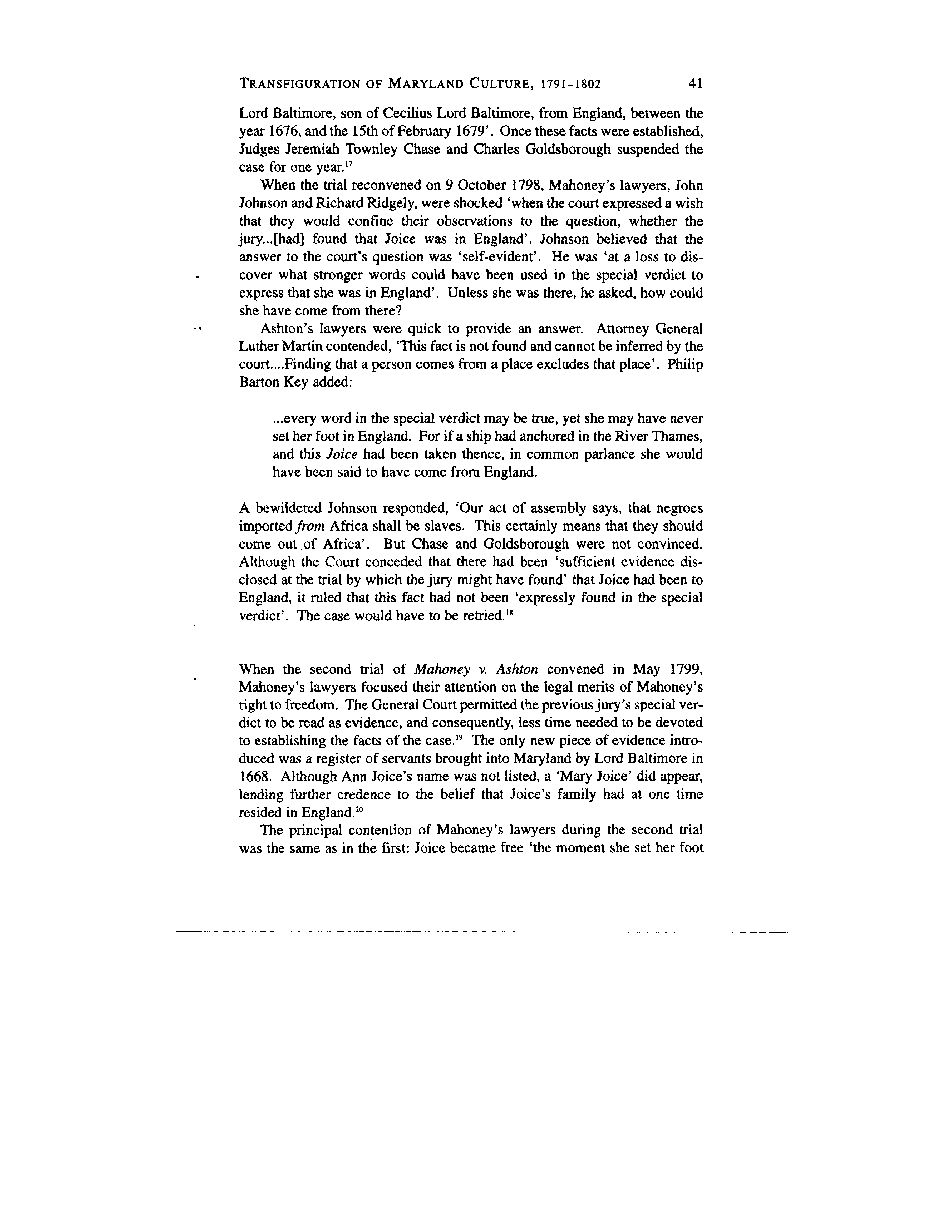|
TRANSFIGURATION OF MARYLAND CULTURE, 1791-1802 41
Lord Baltimore, son of Cecilius Lord Baltimore, from England, between the
year 1676, and the 15th of February 1679'. Once these facts were established,
Judges Jeremiah Townley Chase and Charles Goldsborough suspended the
case for one year."
When the trial reconvened on 9 October 1798, Mahoney's lawyers, John
Johnson and Richard Ridgely, were shocked 'when the court expressed a wish
that they would confine their observations to the question, whether the
jury...[had] found that Joice was in England'. Johnson believed that the
answer to the court's question was 'self-evident'. He was 'at a loss to dis-
cover what stronger words could have been used in the special verdict to
express that she was in England'. Unless she was there, he asked, how could
she have come from there?
Ashton's lawyers were quick to provide an answer. Attorney General
Luther Martin contended, 'This fact is not found and cannot be inferred by the
court....Finding that a person comes from a place excludes that place'. Philip
Barton Key added:
...every word in the special verdict may be true, yet she may have never
set her foot in England. For if a ship had anchored in the River Thames,
and this Joice had been taken thence, in common parlance she would
have been said to have come from England.
A bewildered Johnson responded, 'Our act of assembly says, that negroes
imported from Africa shall be slaves. This certainly means that they should
come out of Africa'. But Chase and Goldsborough were not convinced.
Although the Court conceded that there had been 'sufficient evidence dis-
closed at the trial by which the jury might have found' that Joice had been to
England, it ruled that this fact had not been 'expressly found in the special
verdict". The case would have to be retried.'8
When the second trial of Mahoney v. Ashton convened in May 1799,
Mahoney's lawyers focused their attention on the legal merits of Mahoney's
right to freedom. The General Court permitted the previous jury's special ver-
dict to be read as evidence, and consequently, less time needed to be devoted
to establishing the facts of the case.1" The only new piece of evidence intro-
duced was a register of servants brought into Maryland by Lord Baltimore in
1668. Although Ann Joice's name was not listed, a 'Mary Joice' did appear,
lending further credence to the belief that Joice's family had at one time
resided in England.20
The principal contention of Mahoney's lawyers during the second trial
was the same as in the first: Joice became free 'the moment she set her foot
�
|

